12 Royal Wedding Dresses That Changed Bridal Fashion Forever
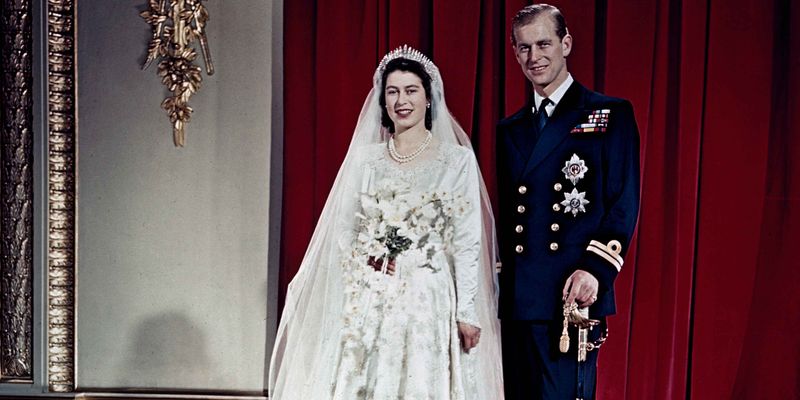
For centuries, royal weddings have captured the imagination of the public, often setting trends that ripple through bridal fashion for generations. Among the most enduring influences is the regal wedding gown, which can redefine elegance, embody cultural shifts, or introduce groundbreaking styles. From Queen Victoria’s pioneering white dress to Kate Middleton’s celebration of tradition and modernity, each gown in this list has left an indelible mark on bridal couture. Whether through exquisite craftsmanship, symbolic design elements, or daring simplicity, these twelve iconic dresses have forever altered the landscape of wedding fashion, inspiring countless brides worldwide to dream of their own fairytale moment.
Queen Victoria (1840)
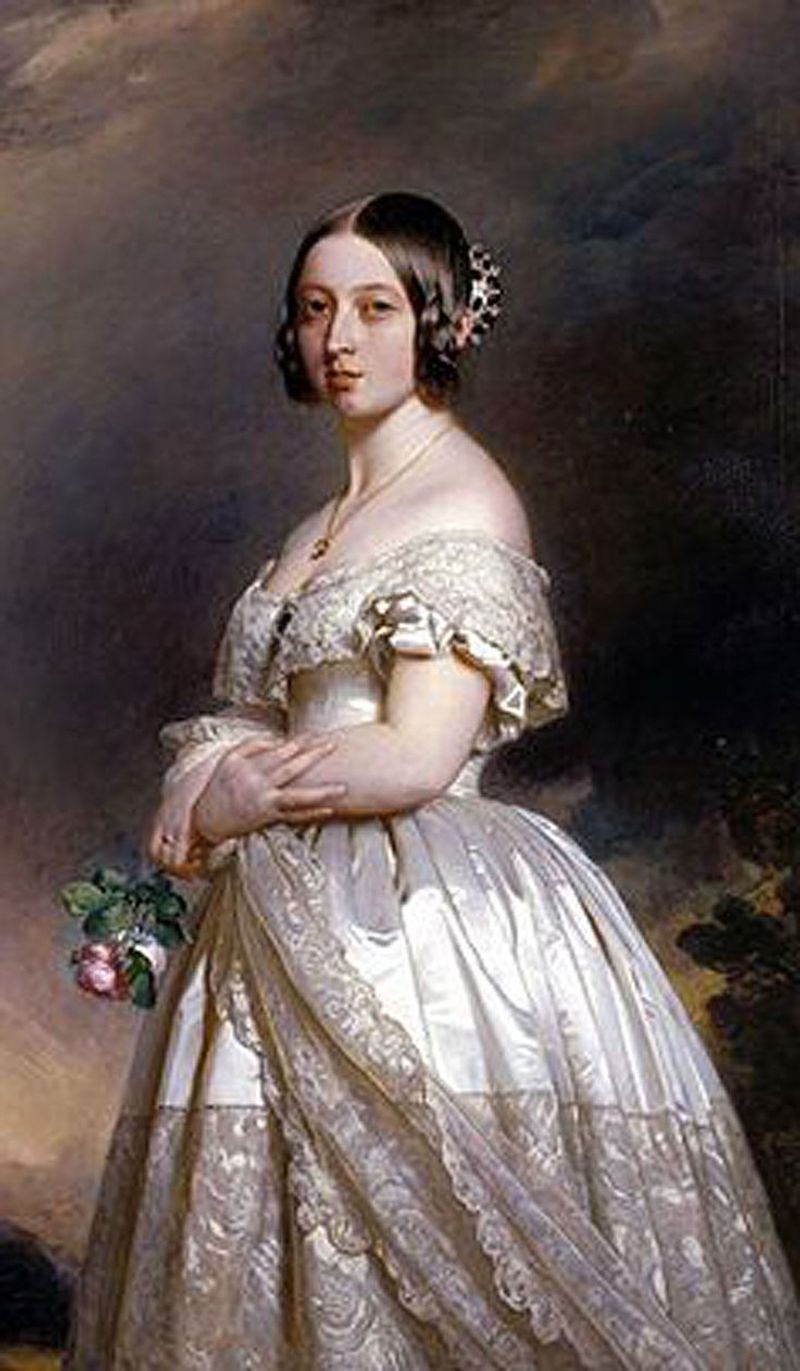
Queen Victoria’s wedding gown is the origin of the white bridal dress tradition in Western culture. At just 21 years old, she walked down the aisle in a magnificent white satin dress, embellished with Honiton lace, a choice that was both bold and symbolic. Back then, white was not the color of purity but of opulence and exclusivity, reserved for the wealthiest.
Victoria’s decision to don white was unconventional but it set a trend that would endure for generations. Her gown wasn’t just about aesthetics; it signified a new era in bridal customs. The intricate lacework and satin were a testament to luxury, setting a new standard for royal weddings.
Queen Elizabeth II (1947)
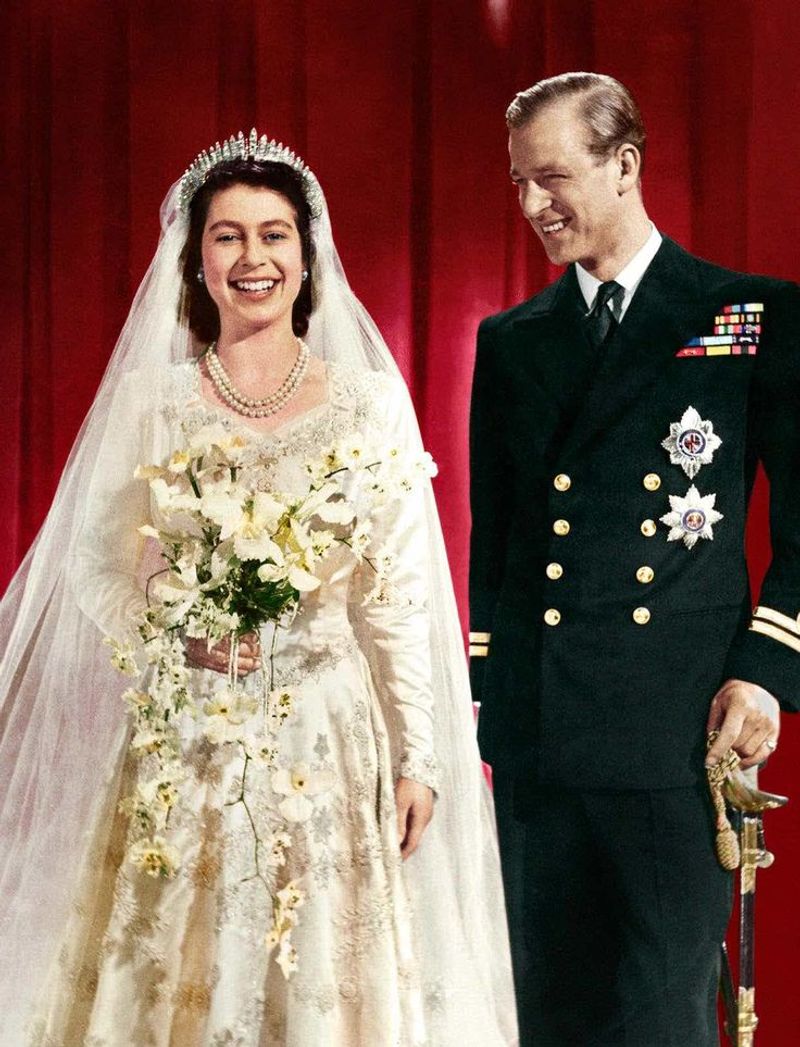
Queen Elizabeth II’s wedding dress was a beacon of hope in post-war Britain. Designed by Norman Hartnell, her gown was crafted using Chinese silk, adorned with intricate floral embroidery symbolizing rebirth and renewal. The 15-foot train was a nod to grandeur and royal tradition, despite the economic hardships of the time.
Elizabeth used ration coupons to obtain the fabric, a testament to the ingenuity and resourcefulness of the era. The gown embodied a message of resilience and optimism, resonating with many who were rebuilding their lives. It wasn’t just a dress; it was a symbol of a nation’s perseverance and aspiration for a brighter future.
Grace Kelly of Monaco (1956)
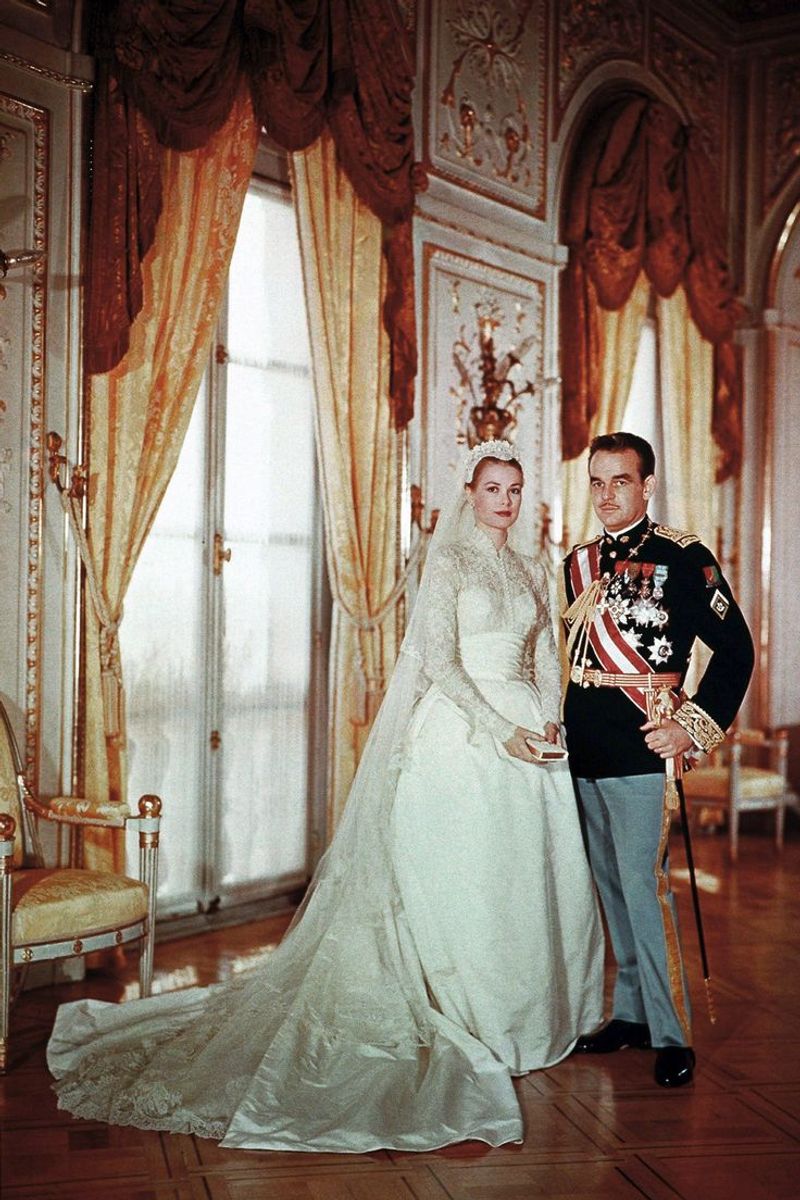
Grace Kelly’s wedding gown remains one of the most iconic in bridal history, epitomizing timeless elegance and sophistication. Crafted by Helen Rose, the dress featured Brussels lace, silk taffeta, and thousands of tiny pearls, creating a vision of regal beauty.
Grace’s transformation from Hollywood star to Monaco royalty captivated the world, and her gown played a pivotal role in this narrative. The high-neck, long-sleeved design exuded modesty and refinement, inspiring countless brides, including Kate Middleton decades later. This gown’s legacy lies not only in its exquisite craftsmanship but also in its ability to capture the imagination of those dreaming of a fairytale romance.
Princess Margaret (1960)
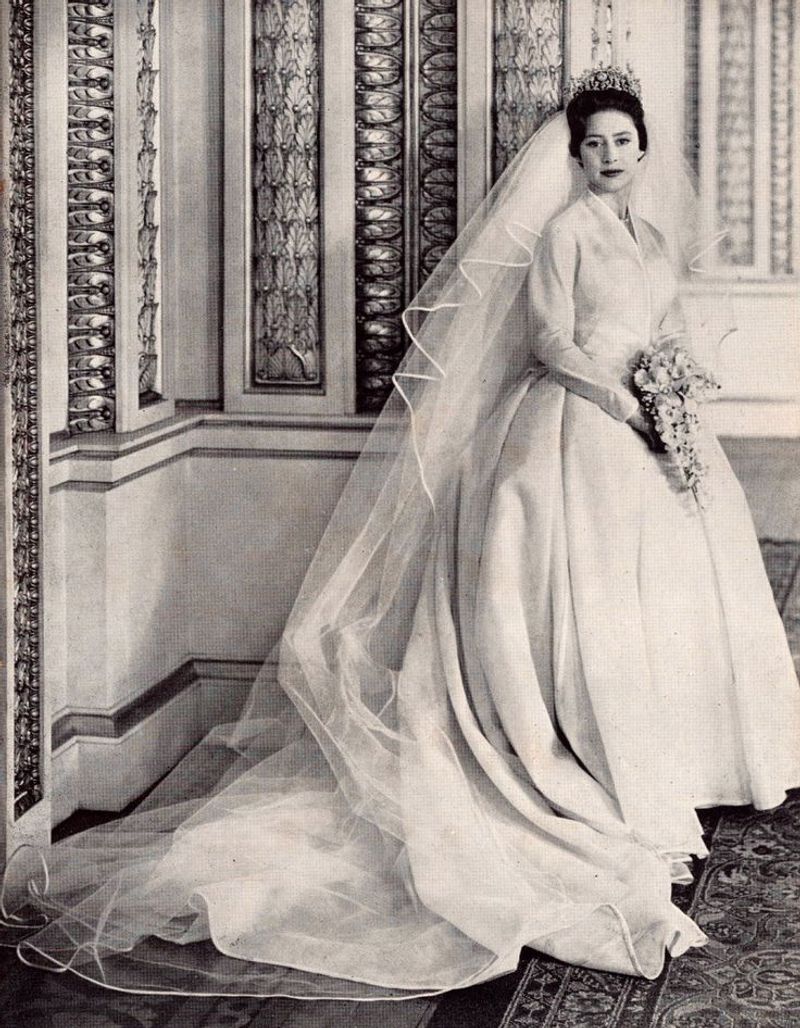
Princess Margaret’s wedding gown was a departure from the ornate styles typical of royal weddings. Designed by Norman Hartnell, the silk organza dress embraced simplicity and modernity, reflecting Margaret’s own distinctive style and independent spirit.
The minimalist design, with its lack of embellishments, marked a shift towards more streamlined bridal fashion, influencing the aesthetic preferences of the 1960s. Margaret’s choice to forgo a tiara in favor of a simple headpiece was equally bold, highlighting her preference for understated elegance. This gown was not only a reflection of Margaret’s personality but also a harbinger of changing bridal trends.
Wallis Simpson (1937)
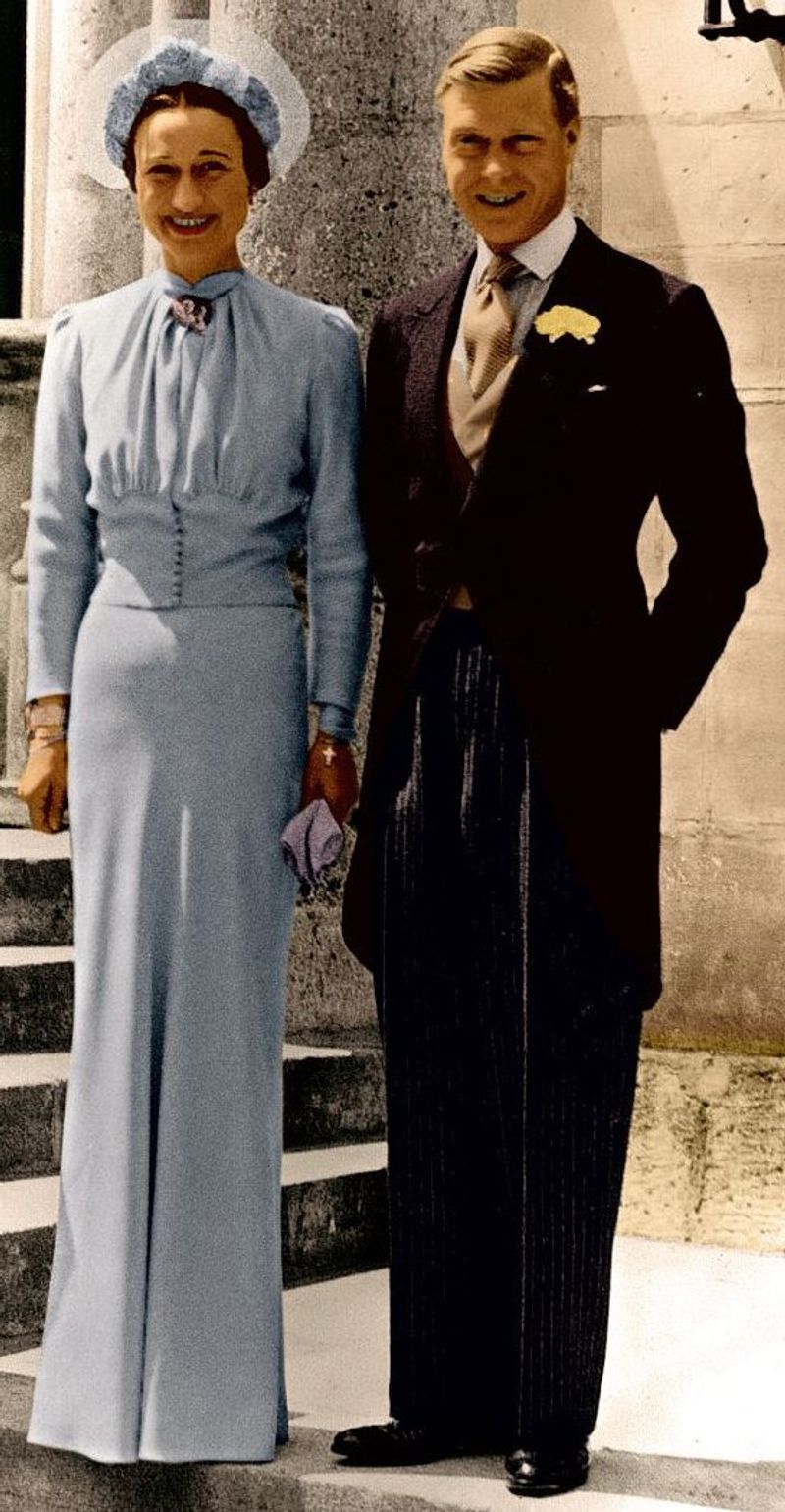
Wallis Simpson’s wedding gown was as controversial as it was influential. Her choice of a sleek silk crepe gown in a unique shade known as “Wallis blue” defied royal tradition, showcasing her penchant for breaking norms. Designed by Mainbocher, the gown was both simple and unforgettable.
With its minimalist silhouette and soft hue, it stood apart from the ornate dresses typical of the time, embodying modern sophistication. Wallis’s style was emulated by many, cementing her status as a fashion icon. Her wedding gown was not just attire; it was a statement of individuality, resonating with those who dared to defy convention.
Princess Diana (1981)
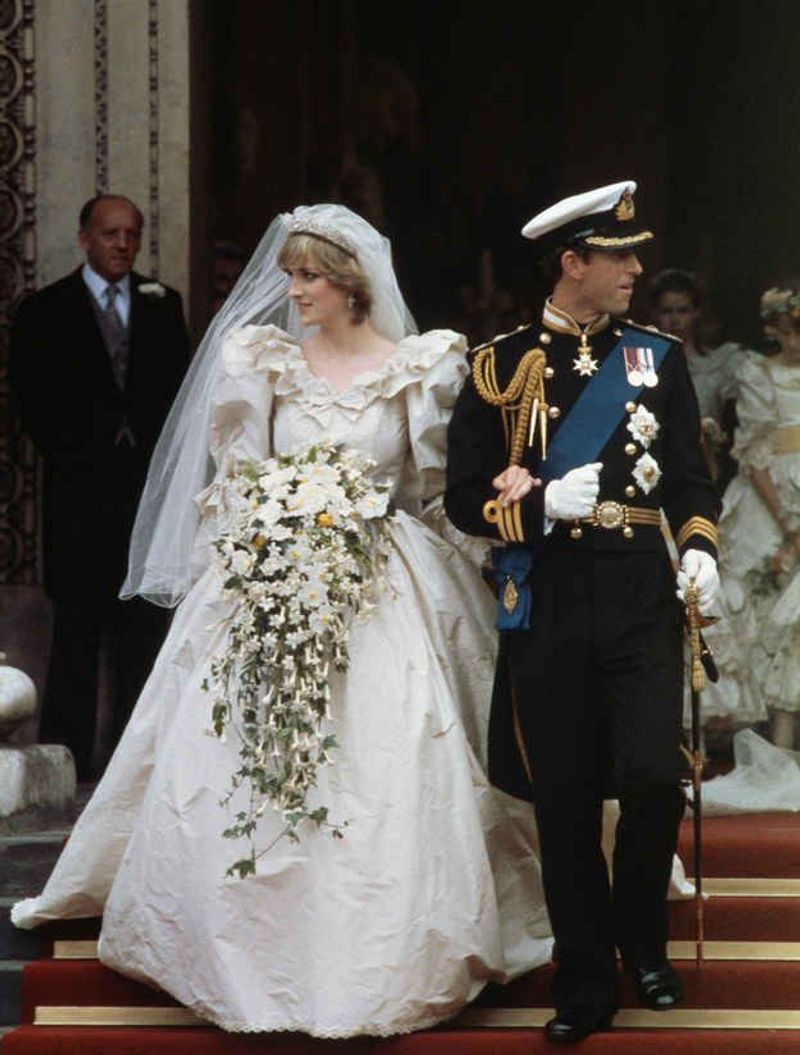
Princess Diana’s wedding gown is perhaps the most famous bridal dress of the 20th century, sparking global fascination. Designed by David and Elizabeth Emanuel, it featured ivory taffeta, lace trims, and a record-breaking 25-foot train.
The gown’s voluminous design, complete with puffed sleeves and intricate details, embodied the extravagant style of the 1980s. Diana’s dress set a new standard for bridal fashion, with countless replicas created worldwide. Her wedding day was a fairytale moment that captivated millions, and her gown became a symbol of romance and fantasy, inspiring brides to embrace their own royal dreams.
Sarah Ferguson (1986)
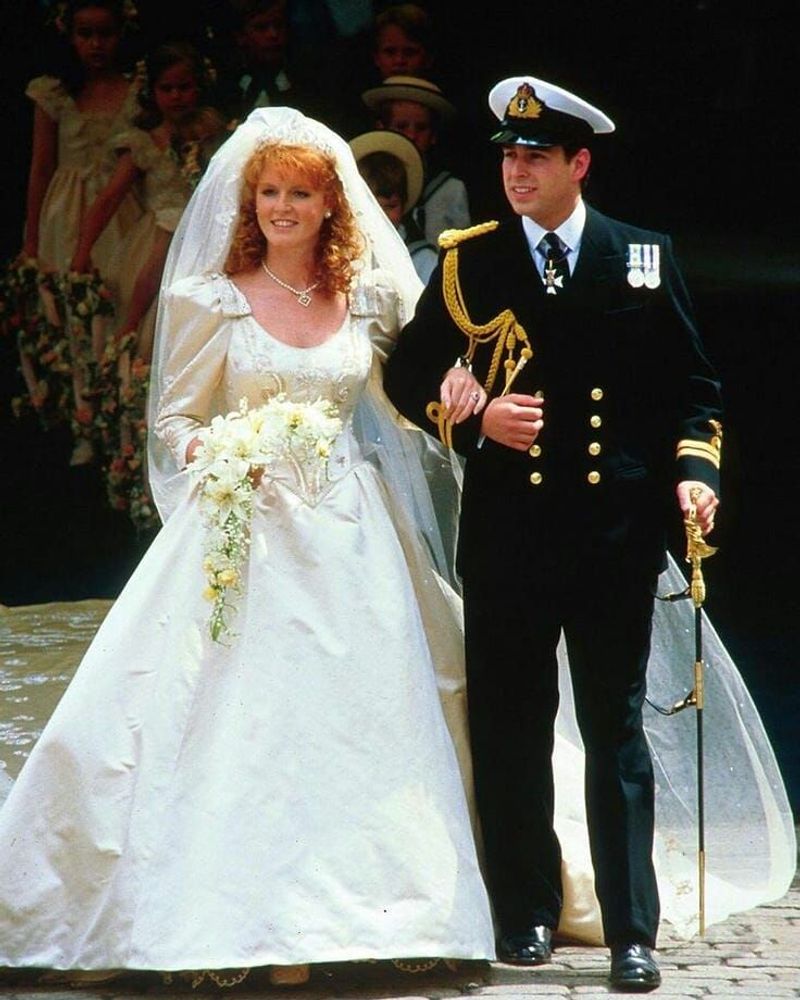
Sarah Ferguson’s wedding dress was a masterpiece of personal symbolism and royal elegance. Designed by Lindka Cierach, the ivory satin gown was adorned with intricate beadwork and a 17-foot train that captured the public’s imagination.
The beadwork incorporated symbols meaningful to Sarah, adding a personal touch to her royal attire. Her choice of design resonated with many brides who sought to infuse their gowns with individuality. Within hours of her wedding, replicas were being made, attesting to the gown’s immediate impact on bridal fashion. Sarah’s dress was more than just beautiful; it was a canvas of personal expression.
Princess Anne (1973)
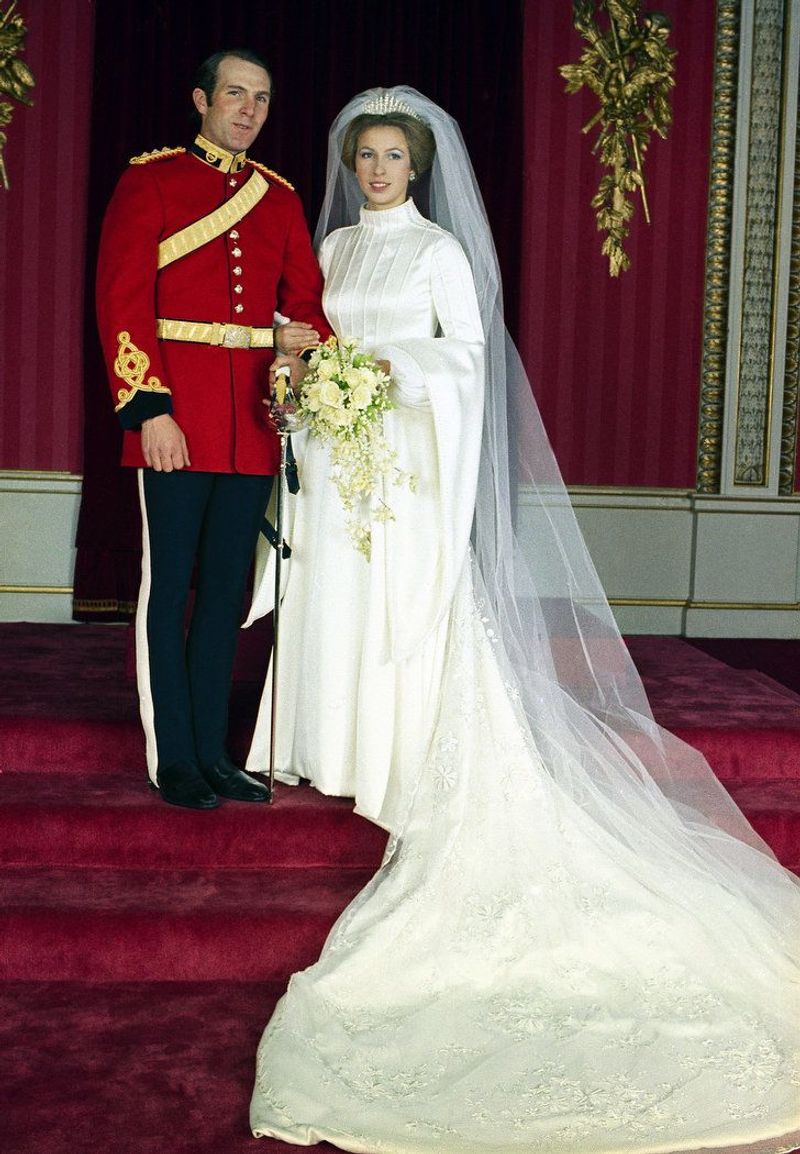
Princess Anne’s wedding dress, with its Tudor-style elegance, was a nod to historical influence and contemporary style. Designed by Maureen Baker, the silk chiffon gown featured trumpet sleeves, capturing the minimalist-chic aesthetic of the 1970s.
Anne’s gown was unique in its historical references, yet it spoke to the modern bride with its clean lines and understated beauty. The choice of a high collar and flowing silhouette resonated with those seeking a blend of tradition and modernity. Her gown was not just a fashion statement; it was a bridge between the past and the present, appealing to brides across generations.
Queen Rania of Jordan (1993)
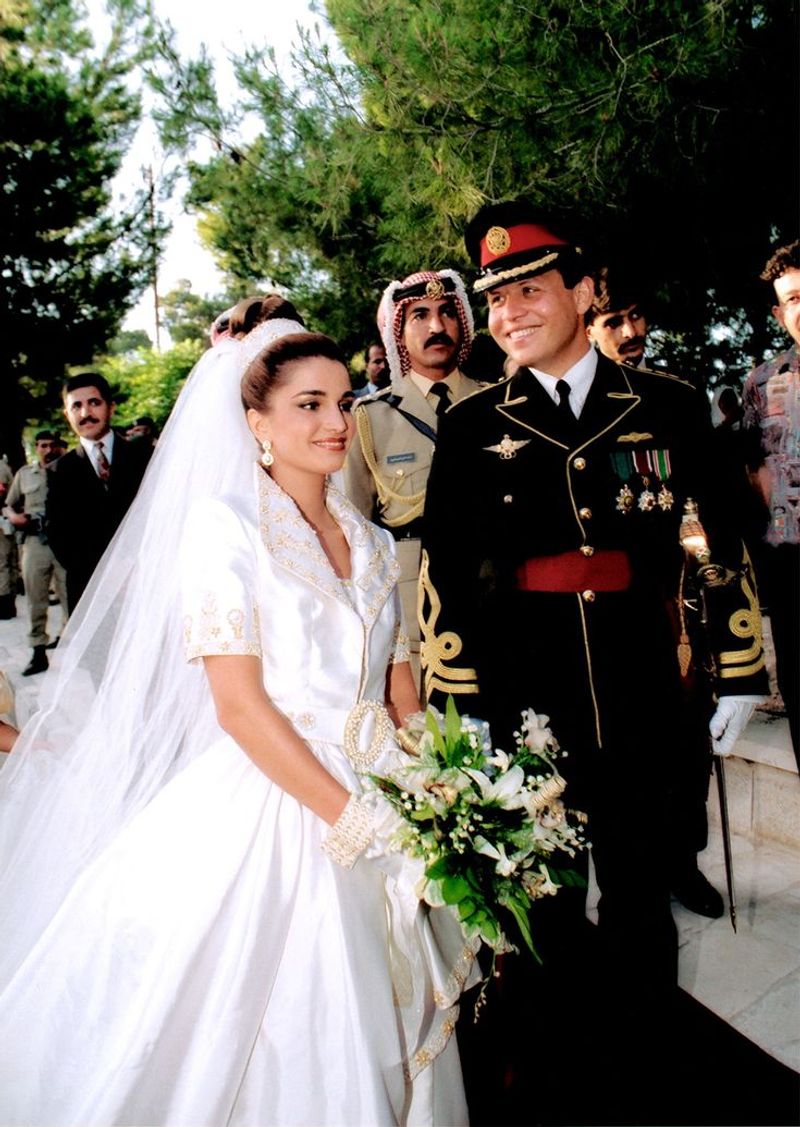
Queen Rania’s wedding gown was a breathtaking blend of cultural influences and couture excellence. Designed by Bruce Oldfield, the gown featured a voluminous skirt with gold trim, seamlessly fusing Middle Eastern aesthetics with Western bridal fashion.
Rania’s dress was a harmonious balance of tradition and innovation, reflecting her role as a modern queen. The gown’s luxurious design and intricate detailing captivated many, setting a new standard for cross-cultural bridal fashion. Rania’s choice of attire was not only a celebration of her heritage but also a statement of unity and elegance, inspiring brides to embrace diverse cultural inspirations.
Princess Masako of Japan (1993)
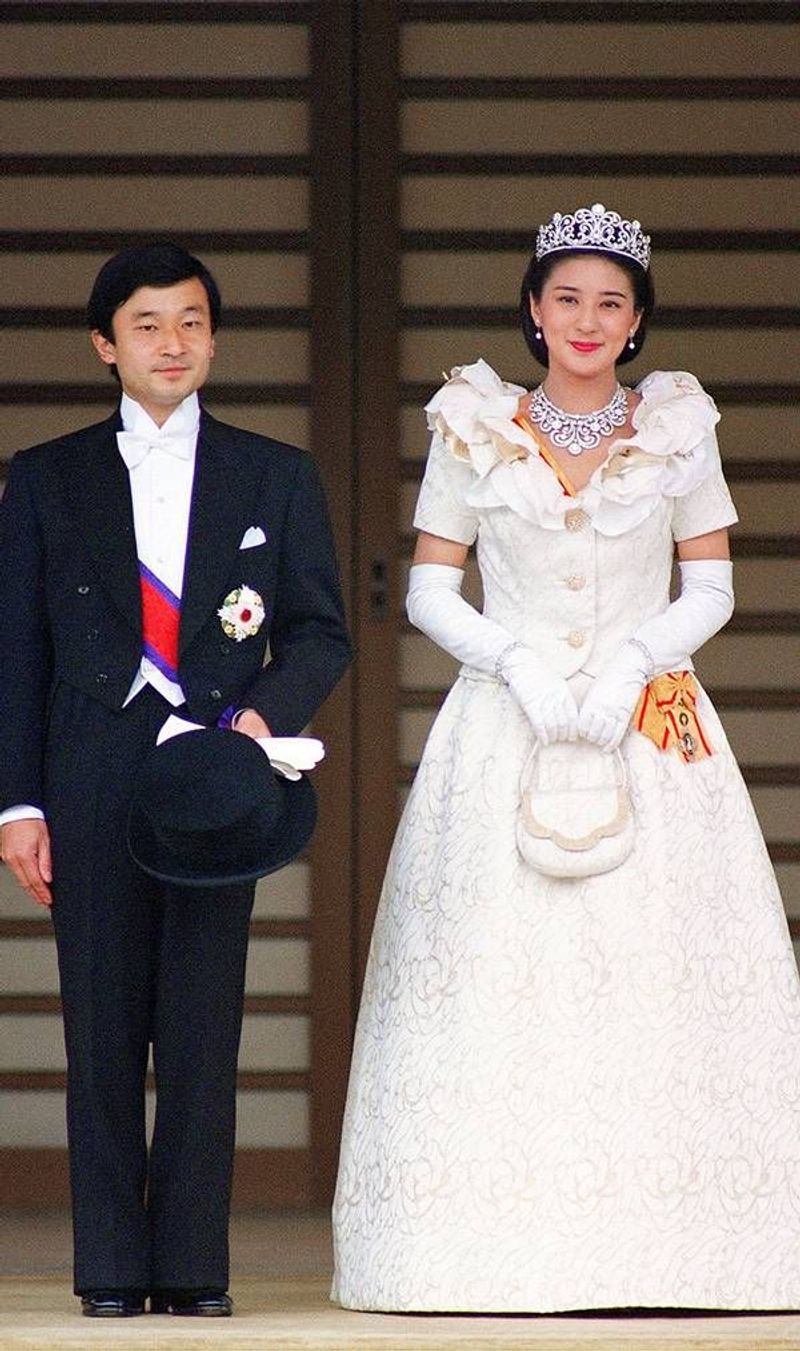
Princess Masako of Japan elegantly bridged tradition and modernity with her wedding attire. Transitioning from traditional Japanese wear to an ivory gown with a dramatic ruffled neckline, she honored both her heritage and contemporary fashion.
Designed to reflect her unique position as a modern royal, Masako’s gown combined minimalist elegance with cultural significance. The dress was a symbol of her journey, blending ceremony with modern style. Her choice resonated with many, showcasing how one could honor tradition while embracing new trends. Masako’s gown was a testament to the evolving nature of bridal fashion, appealing to both classic and modern sensibilities.
Crown Princess Victoria of Sweden (2010)
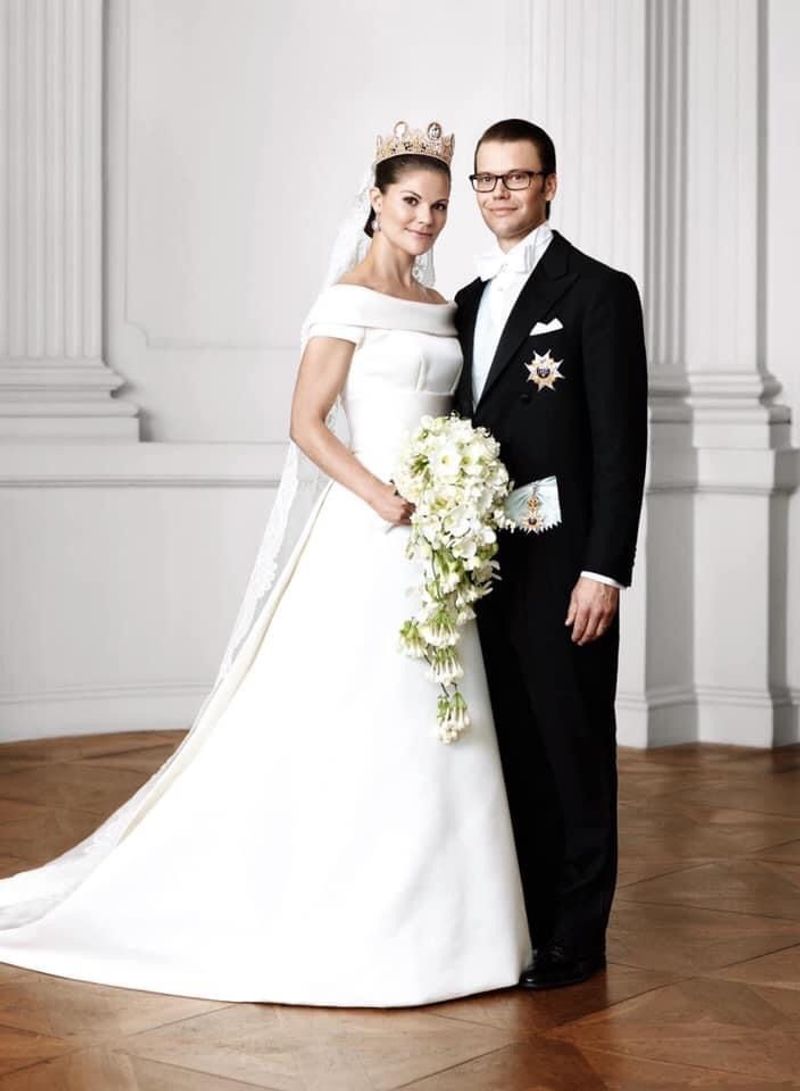
Crown Princess Victoria’s wedding gown was a masterpiece of refined simplicity and cultural symbolism. Designed by Pär Engsheden, the boatneck gown featured a 16-foot train and lace inspired by Swedish folklore.
Victoria’s choice of gown highlighted her appreciation for tradition while embracing modernity. The minimalist design was a nod to her personal style, emphasizing elegance without excessive embellishment. Her dress was a reflection of Swedish culture, with details that resonated with national pride. Victoria’s wedding attire was not just an outfit; it was a celebration of heritage, inspiring brides to find beauty in simplicity and symbolism.
Kate Middleton (2011)
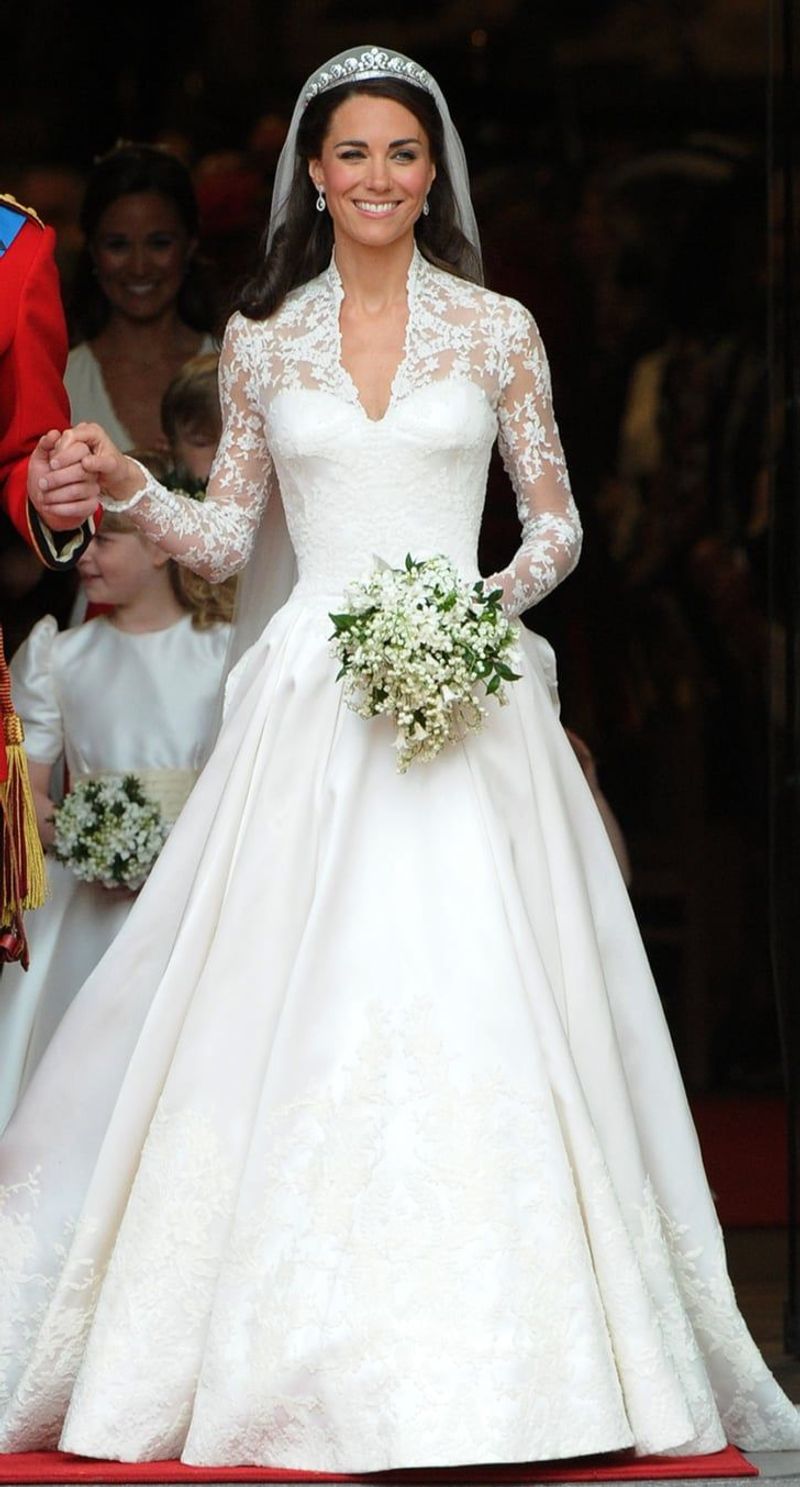
Kate Middleton’s wedding dress was a perfect blend of tradition and modern elegance, reshaping bridal expectations worldwide. Designed by Sarah Burton for Alexander McQueen, the lace-sleeved, V-neck gown featured embroidery representing the UK’s four nations.
Kate’s choice honored royal traditions while introducing contemporary design elements, captivating audiences globally. The gown’s timeless beauty and symbolic gestures resonated with many, inspiring brides to blend heritage with modernity. Kate’s wedding dress wasn’t merely a fashion choice; it was a statement of unity and grace, influencing a generation of brides to seek harmony between classic and contemporary styles.

Comments
Loading…